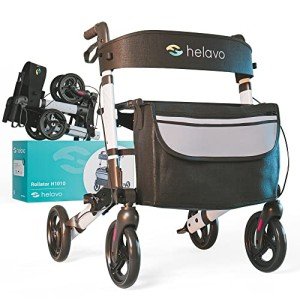The Brake Walker: Revolutionizing Vehicle Safety and Performance
In the ever-evolving landscape of automobile technology, safety and performance stay the two paramount concerns for chauffeurs and producers alike. One innovative solution that has gotten considerable traction recently is the Brake Walker system. This post dives into the complexities of Brake Walker technology, illuminating its advantages, performances, and future potential while attending to some often asked questions.
What is a Brake Walker?
The term "Brake Walker" describes an advanced vehicle feature developed to improve braking performance, enhance vehicle handling, and boost general safety during various driving conditions. This technology aims to offer drivers with greater control over their cars, whether on wet surfaces, inclines, or in emergency scenarios.
Table 1: Key Features of Brake Walker Technology
| Function | Description |
|---|---|
| Automated Braking | System identifies the required braking force and adjusts appropriately. |
| Slip Control | Screens wheel slip and offers optimum stopping power. |
| Adaptive Performance | Changes braking action based upon driving conditions and habits. |
| Chauffeur Feedback | Supplies real-time feedback to improve motorist self-confidence. |
| Integration with ABS | Functions alongside existing Anti-lock Braking System (ABS) for optimum effectiveness. |
How Does Brake Walker Work?
At its core, the Brake Walker system incorporates sensing units, algorithms, and advanced braking elements to provide remarkable performance. Once engaged, the system continually examines various criteria, including:
- Wheel speed: Determines how quickly each wheel is turning.
- Road conditions: Uses sensing units to examine surface area moisture, slope, and other aspects.
- Chauffeur input: Analyzes braking patterns and objectives based on foot pressure on the pedal.
By integrating this information, the Brake Walker can instantly modulate braking force, mitigating the possibility of wheel lockup or skidding and efficiently bringing the car to a safe stop.
Table 2: Components of the Brake Walker System
| Element | Function |
|---|---|
| Sensing units | Identify wheel speed, surface conditions, and driver inputs. |
| ECU (Electronic Control Unit) | Processes data and optimizes braking performance. |
| Braking Mechanism | Engages and disengages brakes based on concern conditions. |
| Interface | Offers feedback and system status to the driver. |
Advantages of Brake Walker Technology
The implementation of Brake Walker systems comes with a wide variety of benefits that have the possible to enhance both security and performance on the roadway. Here are the noteworthy benefits:
1. Boosted Safety
A top feature of Brake Walker technology is its capability to prevent skidding and loss of control, particularly during negative weather conditions. My Mobility Scooters is vital in lowering the possibility of accidents.
2. Enhanced Performance
By optimizing braking force, the Brake Walker system not only boosts stopping power but also contributes to overall lorry handling. Chauffeurs can experience greater confidence in their lorry's responsiveness.
3. Increased Comfort
This technology provides a smoother braking experience, decreasing abrupt stops and boosting guest comfort.
4. Adaptive Learning
The Brake Walker can discover driver behaviors in time, changing its reactions accordingly to supply customized driving assistance.
5. Integrated Systems
Brake Walker technology works perfectly with existing automotive systems, such as ABS, making sure thorough security and performance improvements without the requirement for a total overhaul.
Regularly Asked Questions (FAQ)
Q1: Is Brake Walker technology available in all automobiles?
A1: Currently, Brake Walker technology is more commonly discovered in higher-end designs and newer lorries. However, as automobile technology advances, it is expected to be integrated into more models throughout the board.
Q2: How does Brake Walker compare to standard braking systems?
A2: While standard braking systems rely entirely on the driver's input, the Brake Walker system uses advanced algorithms and sensing units to enhance braking performance, dramatically decreasing the possibility of mishaps and improving general vehicle control.
Q3: Can Brake Walker be retrofitted to older automobiles?
A3: Retrofitting Brake Walker systems into older car designs can be technically challenging and might not always be feasible. It is advisable for vehicle owners to seek advice from with automobile specialists for compatibility before pursuing installation.
Q4: Are there maintenance requirements for Brake Walker systems?
A4: Like all automotive systems, Brake Walker technology may need regular checks and upkeep to ensure ideal performance. It's advised to follow maker standards for examinations and upkeep.
Q5: Will using Brake Walker effect fuel economy?
A5: While Brake Walker technology optimizes braking performance, there is little evidence to recommend it significantly affects fuel economy. Nevertheless, enhanced braking can result in smoother driving patterns, which could indirectly improve fuel efficiency.
The Brake Walker system presents a considerable advancement in automobile safety and performance technology. With its ability to adapt to chauffeur habits and road conditions, it promises to redefine how motorists interact with their cars. As this technology continues to develop and incorporate into more lorries, it compels automotive makers and customers alike to reconsider their approaches to driving security and performance.
By accepting developments like the Brake Walker, the vehicle industry takes a considerable step towards a safer, more efficient, and confident driving experience for everybody on the roadway. As technology advances, the hope is for widespread adoption, leading to a future with fewer mishaps and enhanced driving comfort.
Contact us to Action
For those thinking about enhancing their vehicle's security features, it may be time to consult their regional vehicle dealers about the current developments in Brake Walker technology and other safety-enhancing systems.

